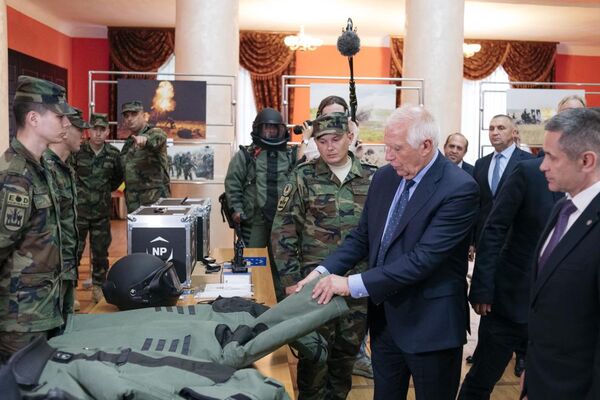
Vice-President of the European Commission Josep Borrell formally handing over the first batch of EU-funded military assistance to Moldova on 31 May. (European Commission)
The Armed Forces of the Republic of Moldova has received its first batch of European Union (EU)-funded military equipment as part of the European Peace Facility (EPF), the EU announced on 31 May.
Over a 36-month period, Moldova will receive EUR40 million (USD42.87 million) worth of non-lethal military equipment in the areas pertaining to air surveillance, mobility and transportation, logistics, command-and-control (C2), and cyber defence.
According to a previous EU announcement, the military assistance includes unmanned aerial systems (UASs), radios, explosive ordnance disposal suits, and medical equipment such as field hospitals, ambulances, and pickup trucks.
The support package is part of an ‘Assistance Measure' ratified by the EU Council in December 2021 under the EPF, designed to enhance the operational effectiveness of the armed forces and accelerate their compliance with EU standards and interoperability. The e-Governance Academy for cyber and the Estonian Centre for Defence Investments (ECDI) are the primary benefactors.
Since 2021 Moldova has received EUR87 million worth of military hardware under the EPF. Earlier equipment included unmanned aerial reconnaissance vehicles, tactical communications, and explosive ordnance disposal systems along with logistics, mobility, C2, and cyber-defence solutions.
Looking to read the full article?
Gain unlimited access to Janes news and more...
